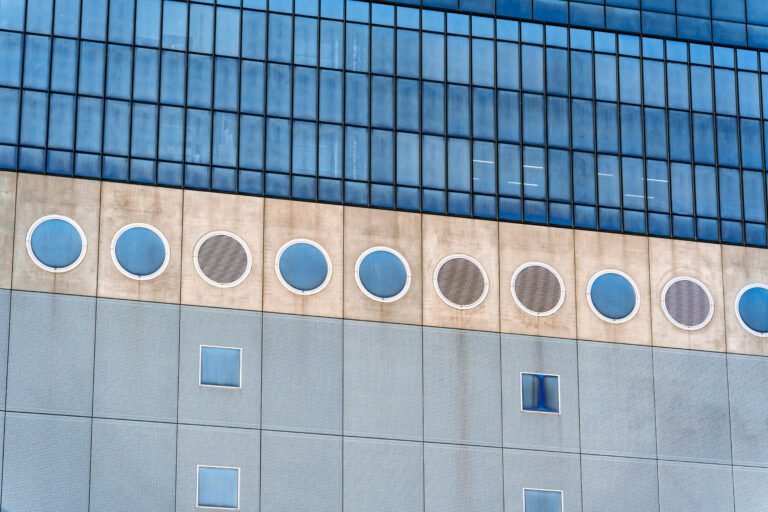Commercial property operating costs accumulate relentlessly over building lifetimes. Energy for lighting, heating, and cooling represents a substantial portion of these expenses, along with maintenance, tenant improvements, and the less obvious costs of tenant turnover. Natural light quality affects several of these cost categories in ways that aren’t always obvious when evaluating building design or renovation decisions, but the cumulative impact over decades of operation can be significant.
The financial case for daylighting in commercial buildings goes beyond just reducing electric lighting costs. While that’s part of the equation, the broader effects on HVAC loads, tenant satisfaction, and workplace productivity create a more complex calculation. Buildings with effective natural light strategies often have lower total operating costs than superficially similar properties where daylighting was an afterthought, and the gap widens over time as the benefits compound.
Electric Lighting Costs That Add Up Daily
Artificial lighting in commercial buildings runs for thousands of hours annually, consuming electricity and creating heat that affects cooling loads. Reducing reliance on electric lighting through effective daylighting directly cuts energy consumption in ways that show up on utility bills month after month.
The savings vary based on building type and occupancy patterns. Office buildings occupied primarily during daylight hours see the most benefit because that’s when natural light is available and when artificial lighting would otherwise be needed. Retail spaces benefit from daylighting both through reduced lighting costs and through the quality of light that makes merchandise more appealing. Warehouses and industrial facilities with large floor areas benefit from overhead daylighting that reaches spaces where wall windows can’t.
Natural lighting from properly designed systems including commercial skylights in appropriate locations can reduce artificial lighting loads by 30-50% in spaces with good daylight access. For a mid-sized office building, this might represent thousands of pounds annually in direct electricity savings. Over a twenty-year period, the cumulative savings can exceed the initial cost of daylighting infrastructure, particularly in buildings where electricity rates are high or where lighting runs continuously during occupied hours.
The calculation needs to account for both the direct cost of electricity and the additional cooling load that artificial lighting creates. Every watt of lighting power eventually becomes heat that cooling systems need to remove, so reducing lighting loads creates secondary savings through reduced HVAC energy consumption.
Cooling Loads That Daylighting Can Increase or Decrease
The relationship between natural light and cooling costs is more complex than lighting energy savings. Bringing daylight into buildings through glazing can either increase or decrease cooling loads depending on how it’s done. Poorly designed daylighting that admits excessive solar heat gain creates cooling problems that offset any lighting savings. Well-designed systems that provide light while controlling heat gain can actually reduce total cooling costs.
The key is distinguishing between direct sunlight and diffused daylight. Direct sun coming through glazing brings substantial heat that cooling systems need to handle. Diffused light from north-facing glazing, properly shaded south-facing systems, or overhead glazing with appropriate solar control provides illumination without excessive heat gain. The design details matter enormously in determining whether daylighting helps or hurts overall energy consumption.
Modern glazing technologies including low-e coatings, spectrally selective glass, and proper shading strategies allow buildings to admit useful daylight while rejecting solar heat. Buildings designed with these considerations perform very differently from those with simple clear glass that brings in both light and heat indiscriminately. The upfront cost of better glazing specifications typically pays back through reduced cooling costs over the system’s lifetime.
Maintenance Costs That Daylighting Affects
Artificial lighting systems require ongoing maintenance including lamp replacement, ballast servicing, and fixture cleaning. While these costs aren’t enormous relative to total building operations, they add up over time and require coordination that affects building management resources. Reducing reliance on artificial lighting through effective daylighting reduces these maintenance requirements proportionally.
The savings come from both materials and labor. Fewer fixtures operating for fewer hours means less frequent lamp replacement and lower maintenance labor costs. Buildings with good daylighting can often reduce lighting maintenance budgets by 20-30% compared to buildings entirely dependent on artificial lighting. Over decades of operation, this represents meaningful savings that should be factored into daylighting investment decisions.
The other maintenance consideration is that daylighting systems themselves need upkeep. Roof glazing requires cleaning to maintain light transmission, seals need inspection and occasional replacement, and any operable systems need servicing to ensure they continue functioning properly. These maintenance costs need to be accounted for when calculating net operating cost impacts of daylighting strategies.
Tenant Satisfaction That Affects Retention and Rents
The financial impact of tenant satisfaction is harder to quantify than energy costs but potentially more significant. Commercial tenants in buildings with good natural light report higher employee satisfaction, which affects their perception of the space and their willingness to renew leases. Buildings with better daylighting typically see higher tenant retention, which directly affects property income and reduces the costs associated with tenant turnover.
Finding new tenants involves leasing commissions, tenant improvement costs, and vacancy periods that all affect property cash flow. A building that retains tenants for eight to ten year periods has substantially different economics than one where tenants leave after three to five years. If natural light quality contributes even modestly to longer tenancy periods, the financial impact exceeds what would be justified by energy savings alone.
The other factor is rental rates. In competitive markets, buildings with superior natural light can command premium rents because tenants recognize the value of better workplace environments. The premium might be small as a percentage of base rent, but over long lease terms in large spaces, it represents significant additional income that improves property returns.
Workplace Productivity That Businesses Care About
Tenant businesses care about workplace quality because it affects their employees and operations. Research consistently shows that natural light in workplaces correlates with better employee wellbeing, reduced absenteeism, and improved productivity. While property owners don’t directly capture these benefits, they affect what tenants are willing to pay and how they evaluate spaces when making leasing decisions.
Businesses calculating total occupancy costs increasingly factor in workplace quality alongside base rent. A space with excellent natural light might justify higher rent if it delivers better employee outcomes that offset the additional real estate cost. Property owners who understand this can position buildings with good daylighting as premium spaces that deliver value beyond just square footage and location.
The trend toward workplace quality as a differentiator in commercial real estate means that buildings designed with effective daylighting have advantages in attracting and retaining quality tenants. This affects not just current income but long-term property value as the market increasingly recognizes that natural light quality matters for building performance.
HVAC System Sizing That Initial Design Affects
Buildings designed with effective daylighting from the start can sometimes reduce HVAC system sizing because reduced internal heat gains from lighting mean smaller cooling loads. The capital cost savings from smaller mechanical systems can partially offset the cost of daylighting infrastructure, though this only works when daylighting is integrated into initial building design rather than added later.
The ongoing benefit is that smaller, properly sized HVAC systems often operate more efficiently than oversized systems and cost less to maintain over their service lives. Buildings where daylighting reduced mechanical system requirements can have lower operating costs throughout the building’s life, not just from reduced energy consumption but from maintaining appropriately sized equipment.
Calculating Total Cost Impact
The full financial effect of natural light in commercial buildings combines direct energy savings, reduced maintenance costs, higher tenant retention, potential rent premiums, and improved building positioning in competitive markets. No single factor dominates, but together they create meaningful differences in building operating economics over the twenty to thirty year periods that property ownership typically spans.
Buildings where daylighting was properly integrated during design or added through thoughtful renovation typically show lower operating costs and better financial performance than those where natural light was neglected. The challenge is that many of these benefits accrue gradually over time rather than appearing immediately, which requires property owners to take long-term views when evaluating daylighting investments. The buildings that do this well end up with operating cost advantages that compound annually and contribute to better overall property returns.


































